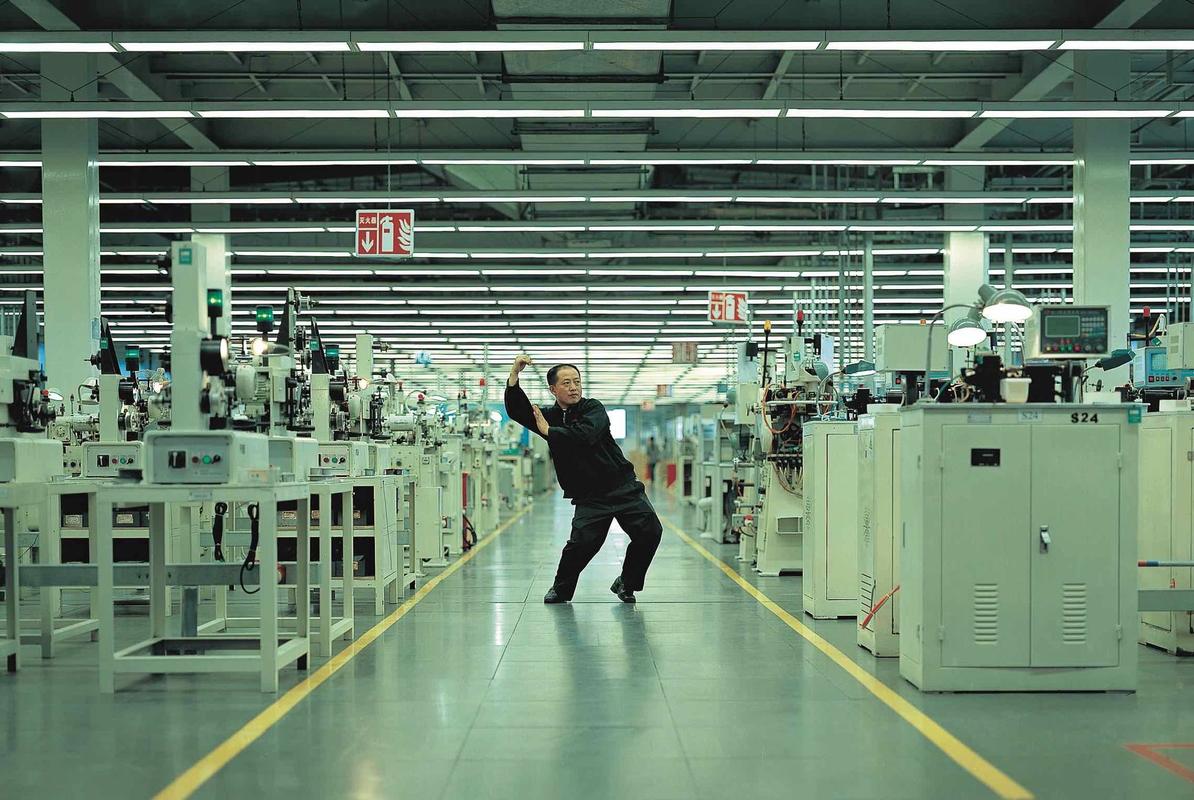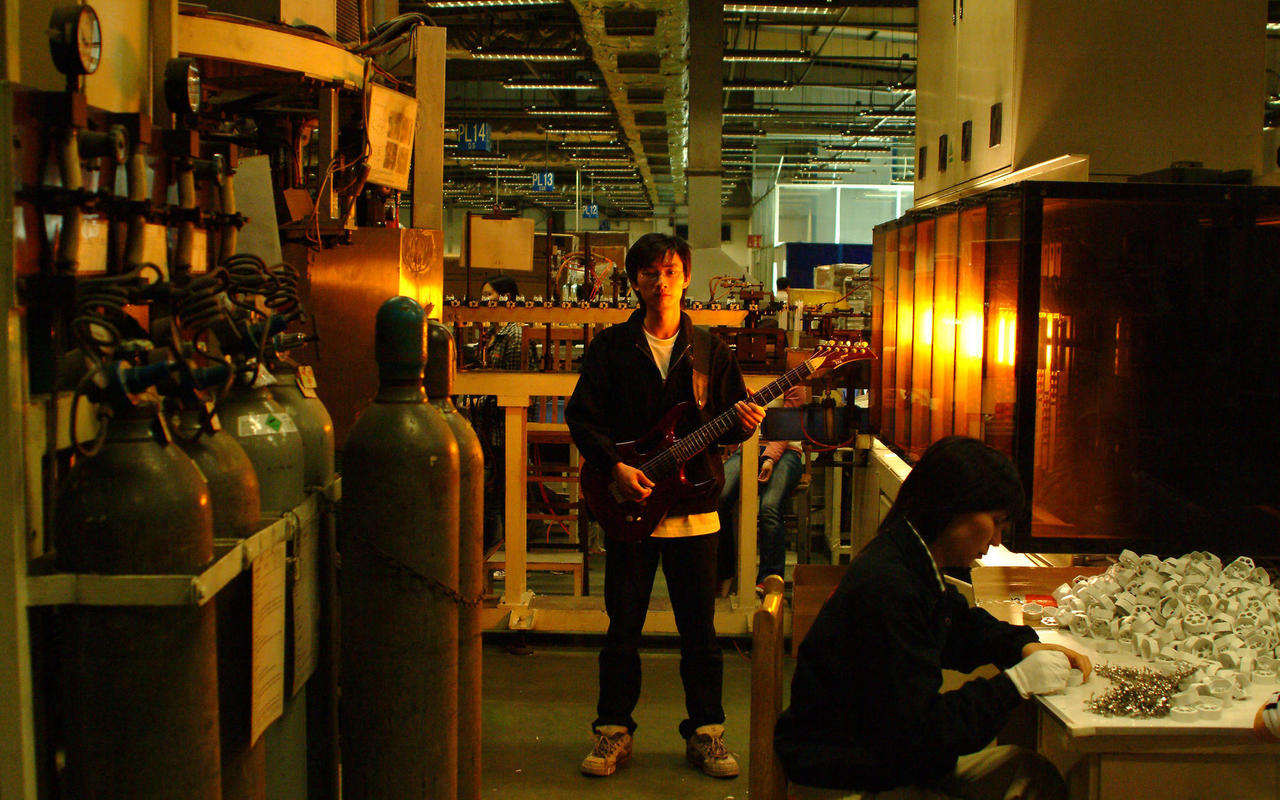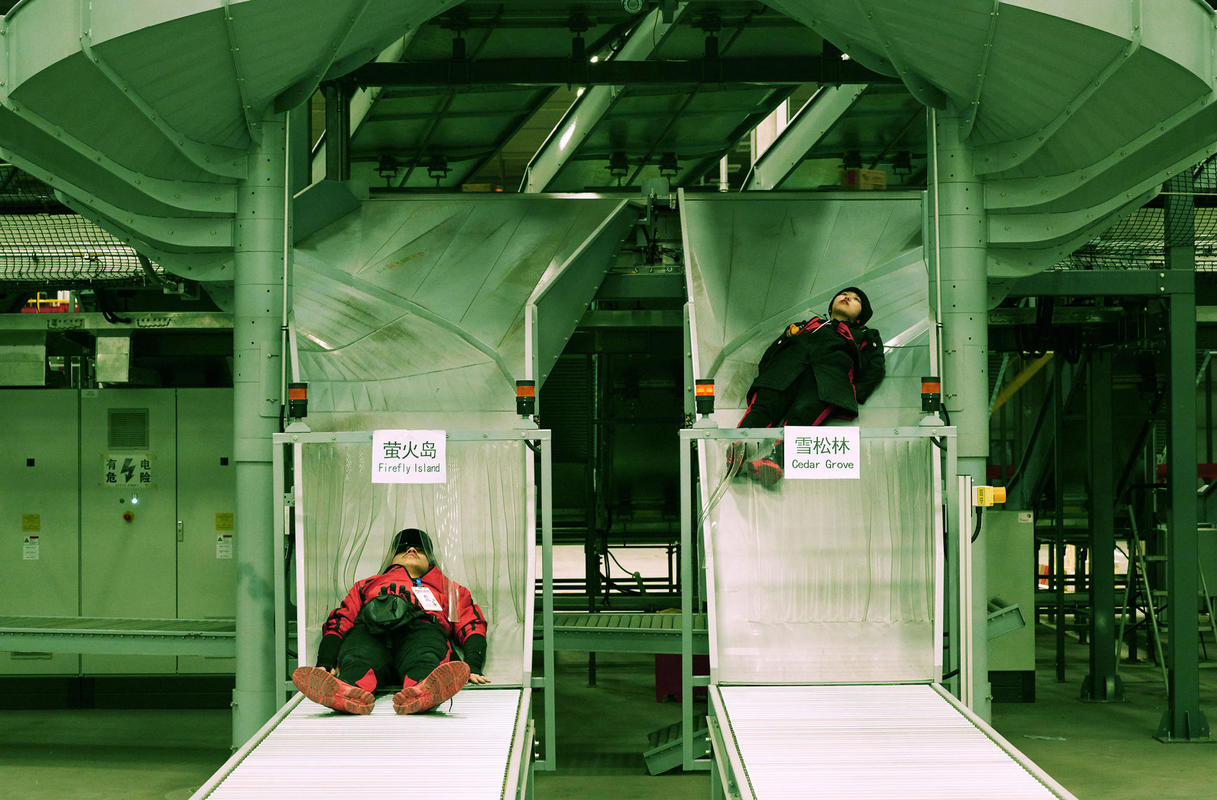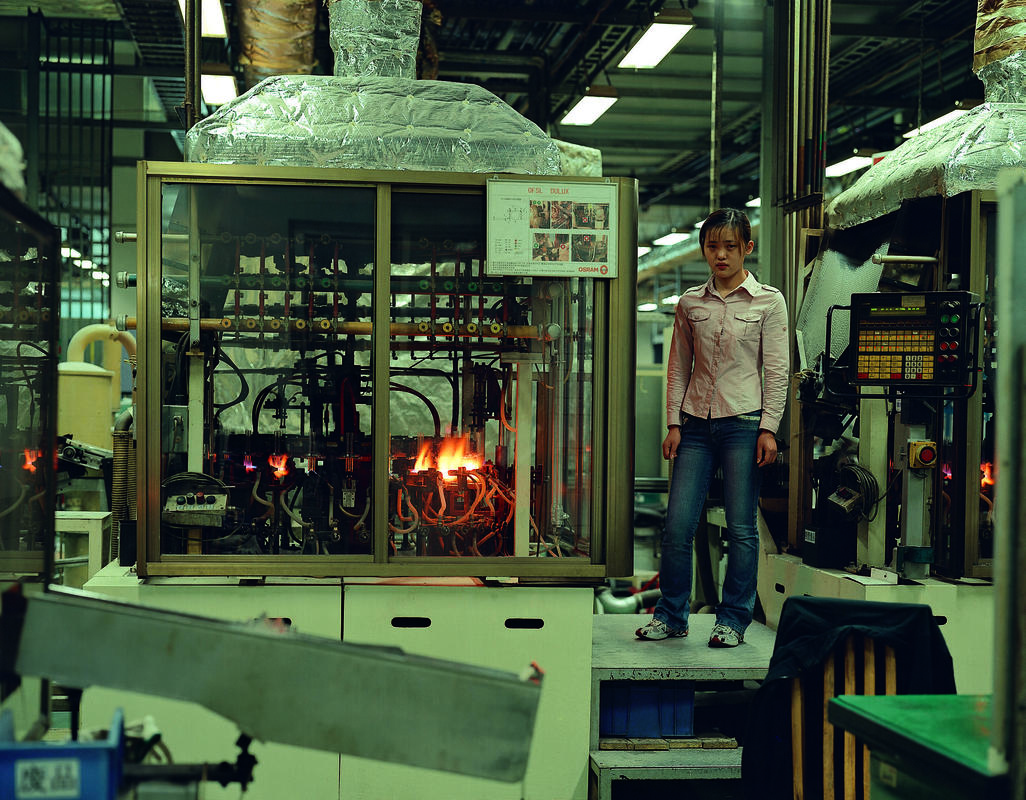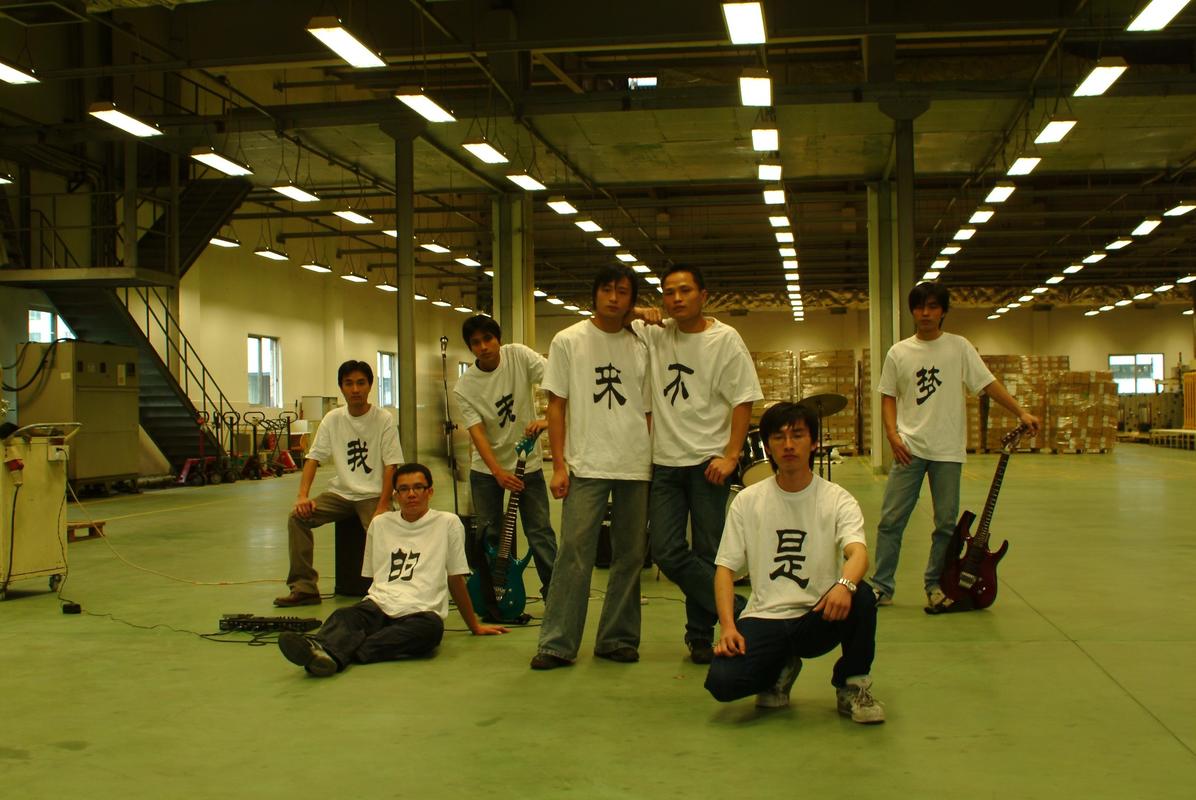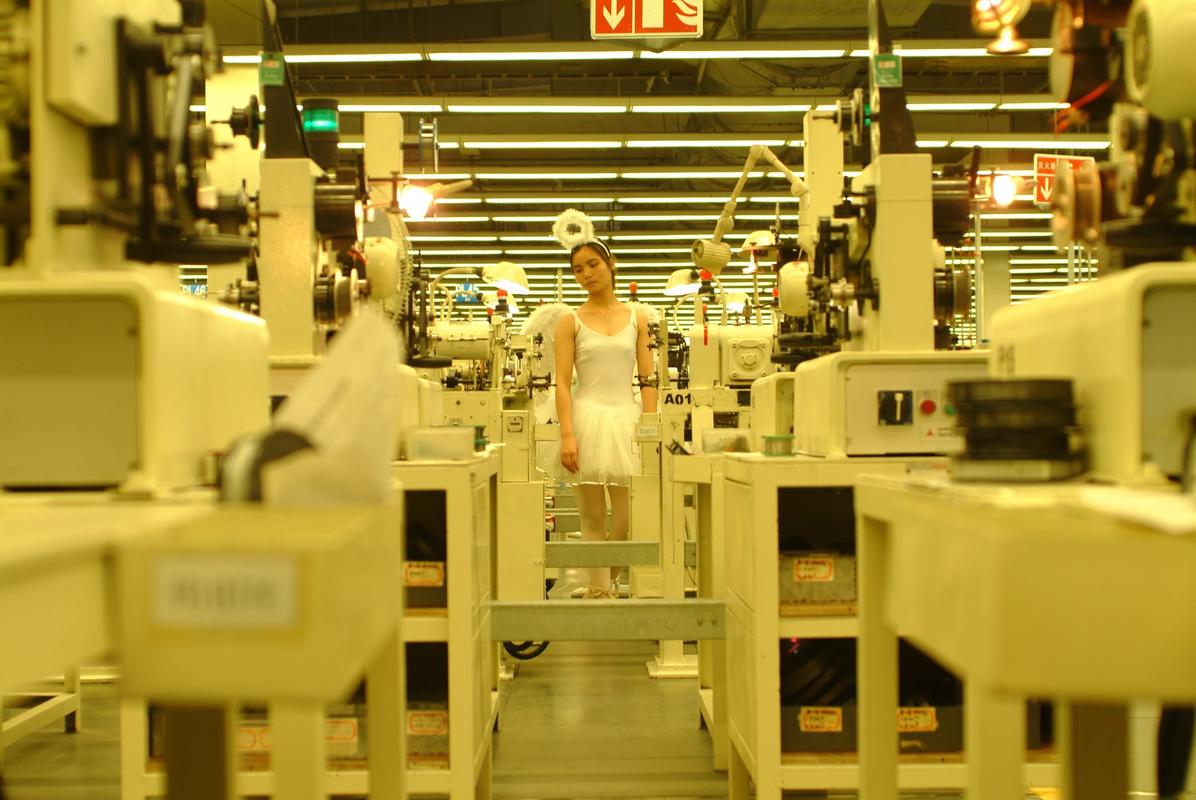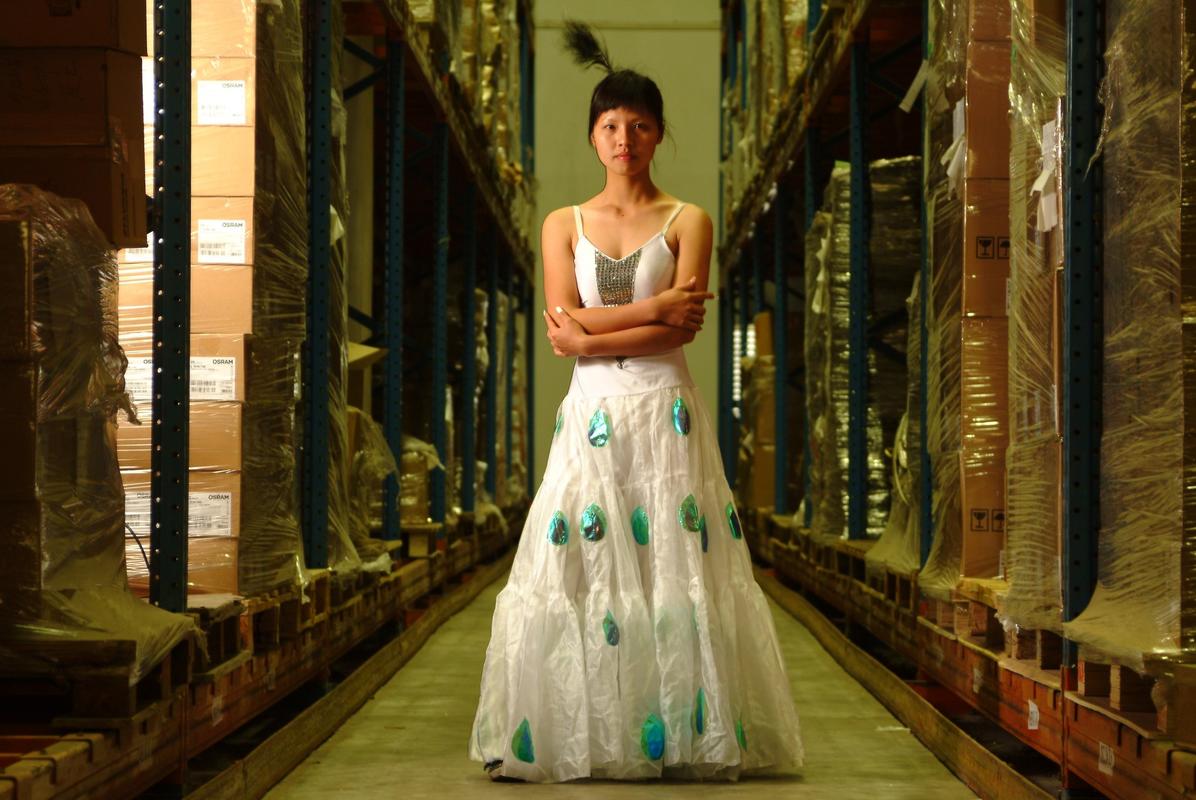More about Whose Utopia

Contributor
In Whose Utopia, Cao Fei examines the unmet hopes of Chinese factory workers.
From the get-go, viewers of Whose Utopia may think they’re only getting a regular old documentary. Fei kicks off the film with interviews with the factory workers of the Osram light bulb factory, located in the Pearl River Delta region of China. But as the film unfolds, it defies expectations, transforming into a piece of abstract performance art in which Fei plays with the boundaries between the real and the imagined, using the workers themselves as the performers, acting within the factory walls. The result is a twenty minute meditation on inequity, class dissonance, and the moral consequences to the cheap goods and services that crowd our modern world.
Cao Fei started work on the piece by distributing a voluntary questionnaire to the workers at the factory, which narrowed down the project’s participants to about thirty people. She then paid the workers weekly visits, talking with them and getting a better understanding of their daily lives and the unrealized ambitions they carried with them. In the second act of the piece, the workers embody these unfulfilled wishes and dreams - everything from ballet, to playing the electric guitar, to break-dancing, all as the factory keeps chugging along around them.
In one sequence, a young ballet dancer wearing pointe shoes bourrées in a small circle, framed on either side by workers at their machines who do not give her so much as a glance. In another, a man dances his way down a line of machines, slowly passing through the rows as the others keep their eyes on their work. The sequences are set against an ambient soundtrack, created by recording various elements of factory life— like the noise of clicking machines or clanging glass— then melding and rearranging them. Fei calls it the soundtrack of the factory, but with “a touch of spirituality”.
The end result is striking, an unsettling combination of dreams and reality, community and solitude. The whole piece feels very contemplative, like Fei is asking the viewer to join with the workers in a quiet, strange kind of meditation— a little less “Headspace” and a little more “Howl.” Even though the title doesn’t include a question mark (something Fei insisted upon) the pointed nature of the question is still keenly felt throughout the film as the viewer is forced to consider the spiritual and moral cost of the cheap production of material goods. And while the film probably isn’t going to be this year’s blockbuster hit, the questions it poses and intensity it provokes are well worth the price of museum admission.
Sources
- Cao Fei's Whose Utopia?: The lives & dreams of Chinese workers. Public Delivery. (n.d.). https://publicdelivery.org/cao-fei-whose-utopia/.
- M+ Magazine. (2018). Cao Fei: Creating "Whose Utopia". YouTube. https://www.youtube.com/watch?v=tSvNpFE8uPs&ab_channel=MPlus.
- Wang, X. (Trans.). (n.d.). Coming Up Hip-Hop and Questioning Utopia. Art21. https://art21.org/read/cao-fei-coming-up-hip-hop-and-questioning-utopia/.
- Wu, R. (X. (2021, February 15). "Whose utopia" – Cao fei at the Museum of modern art. IFAcontemporary. https://ifacontemporary.org/whose-utopia-cao-fei/.

